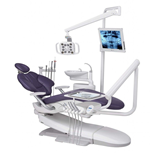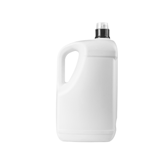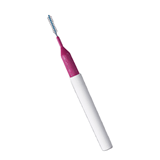Efficient and thorough cleaning of dental instruments is essential to maintain a safe and hygienic environment in dental practices. Traditional manual cleaning methods can be time-consuming and labor-intensive, leading to potential inefficiencies and increased risk of cross-contamination. Ultrasonic cleaners, particularly dental ultrasonic cleaners in Brisbane, offer a streamlined solution that enhances the efficiency and time savings of dental instrument cleaning. In this article, we will explore how ultrasonic cleaners streamline the cleaning process, resulting in improved efficiency and significant time savings for dental practices.
1. Thorough Cleaning in Less Time
Dental ultrasonic cleaners utilize high-frequency sound waves and cavitation to create microscopic bubbles that thoroughly clean dental instruments. This cleaning mechanism allows the ultrasonic waves to reach even the smallest and most intricate areas of the instruments, effectively removing contaminants, debris, and biofilms. The thoroughness of ultrasonic cleaning significantly reduces the need for manual scrubbing or prolonged soaking, saving valuable time for dental professionals. With ultrasonic cleaners, dental instruments can be cleaned more efficiently and quickly, optimizing the workflow in the dental practice.
2. Simultaneous Cleaning of Multiple Instruments
Ultrasonic cleaners are designed with spacious tanks that can accommodate multiple instruments simultaneously. This feature allows dental professionals to clean a batch of instruments at once, rather than cleaning them one by one. By placing multiple instruments in the ultrasonic cleaner, dental professionals can maximize the cleaning capacity and reduce the time required for cleaning. The ability to clean multiple instruments simultaneously streamlines the cleaning process, making it more efficient and time-saving.
3. Automated Cleaning Cycles
Ultrasonic cleaners are equipped with automated cleaning cycles that simplify the cleaning process. Dental professionals can simply load the instruments into the cleaner, select the appropriate cleaning cycle, and let the machine do the work. The ultrasonic cleaner will run the pre-set cleaning cycle, which typically includes a combination of cleaning, rinsing, and drying stages. The automated nature of the cleaning cycles eliminates the need for constant manual intervention, allowing dental professionals to attend to other essential tasks while the instruments are being cleaned. This automation saves time and ensures consistent and reliable cleaning results.
4. Reduction in Manual Labor and Fatigue
Manual cleaning of dental instruments involves physically scrubbing, brushing, and rinsing each instrument individually. This manual labor can be physically demanding and tiresome for dental professionals, leading to fatigue and potential lapses in the cleaning process. Ultrasonic cleaning eliminates the need for extensive manual labor, as the cleaning action is performed by the ultrasonic waves. Dental professionals only need to load the instruments into the cleaner and initiate the cleaning cycle, reducing physical strain and fatigue. This reduction in manual labor not only saves time but also promotes the well-being of dental professionals.
5. Improved Infection Control and Safety
Efficient and timely cleaning of dental instruments is crucial for infection control and patient safety. Ultrasonic cleaners excel in thorough and effective cleaning, removing contaminants and reducing the risk of cross-contamination. By streamlining the cleaning process and saving time, ultrasonic cleaners ensure that instruments are promptly cleaned and ready for use, minimizing the risk of contamination and infection transmission. The improved infection control achieved through the efficient cleaning process of ultrasonic cleaners enhances patient safety and contributes to a safe dental environment.
Exploring the Time-Saving Advantages of Using Ultrasonic Cleaners in Dental Practices
Time is a precious resource in dental practices, where efficiency and productivity are key to providing quality patient care. Ultrasonic cleaners offer significant time-saving advantages in the cleaning and maintenance of dental instruments, allowing dental professionals to streamline their workflow and optimize their valuable time. In this article, we will explore the time-saving advantages of using dental ultrasonic cleaners in practices.
1. Rapid and Thorough Cleaning
Ultrasonic cleaners utilize high-frequency sound waves and cavitation to create microscopic bubbles in a cleaning solution. These bubbles implode near the surfaces of dental instruments, generating powerful shock waves that effectively remove contaminants, debris, and biofilms. The rapid and thorough cleaning action of ultrasonic cleaners significantly reduces the time required for manual scrubbing and soaking of instruments. Within minutes, dental instruments can undergo a thorough cleaning process, ensuring optimal cleanliness and reducing the turnaround time for instrument reprocessing.
2. Simultaneous Cleaning of Multiple Instruments
One of the notable time-saving features of ultrasonic cleaners is their ability to accommodate multiple instruments simultaneously. With spacious tanks and specialized racks, dental professionals can place a batch of instruments into the ultrasonic cleaner for simultaneous cleaning. This eliminates the need for cleaning instruments one by one, saving significant time in the cleaning process. Dental professionals can load multiple instruments at once, initiate the cleaning cycle, and attend to other tasks, maximizing their productivity and efficiency.
3. Automated Cleaning Cycles
Ultrasonic cleaners are equipped with automated cleaning cycles that streamline the cleaning process. Dental professionals can select the appropriate cleaning cycle, which typically includes cleaning, rinsing, and drying stages, and initiate the cycle with the push of a button. The automated nature of these cleaning cycles eliminates the need for constant monitoring and manual intervention during the cleaning process. Dental professionals can set the ultrasonic cleaner to run the desired cycle and focus on other essential tasks, saving time and optimizing their workflow.
4. Reduced Manual Labor and Fatigue
Manual cleaning of dental instruments can be labor-intensive and time-consuming. Scrubbing, brushing, and rinsing each instrument individually can lead to physical fatigue and potentially compromise the quality and thoroughness of the cleaning process. Ultrasonic cleaners eliminate the need for extensive manual labor, as the cleaning action is performed by the ultrasonic waves. Dental professionals only need to load the instruments into the cleaner, initiate the cleaning cycle, and let the machine do the work. This reduction in manual labor not only saves time but also alleviates physical fatigue, allowing dental professionals to maintain their energy and focus on patient care.
5. Enhanced Workflow Efficiency
By incorporating ultrasonic cleaners into their instrument reprocessing workflow, dental practices can achieve enhanced efficiency and improved workflow management. The time-saving benefits of ultrasonic cleaning allow for faster instrument turnaround, enabling dental professionals to have a constant supply of clean and sterilized instruments readily available for patient care. The streamlined workflow reduces delays, optimizes scheduling, and enhances overall practice efficiency, resulting in improved patient satisfaction and increased productivity.
6. Time Savings in Sterilization Process
Ultrasonic cleaning plays a crucial role in preparing dental instruments for sterilization. By thoroughly removing contaminants and debris, ultrasonic cleaners contribute to the effectiveness and efficiency of the subsequent sterilization process. Clean instruments require less time in the autoclave or other sterilization equipment, reducing the overall sterilization cycle time. This time-saving advantage allows dental professionals to achieve faster instrument turnaround, ensuring a smooth and efficient sterilization process.
Cost Benefits Associated with Improved Efficiency and Reduced Instrument Replacement
Efficiency plays a vital role in the success of any dental practice. In addition to enhancing productivity and patient satisfaction, improved efficiency can also lead to significant cost savings. One area where efficiency has a direct impact on costs is the reduction in instrument replacement. In this article, we will explore the cost benefits associated with improved efficiency and reduced instrument replacement in dental practices.
1. Prolonged Instrument Lifespan
Efficiency in dental practices often involves implementing streamlined processes and utilizing advanced technologies such as ultrasonic cleaners. These cleaners effectively remove contaminants and debris from dental instruments, extending their lifespan. By maintaining the cleanliness and integrity of instruments, practices can avoid premature wear and damage, resulting in a longer lifespan for their instruments. This prolongation reduces the frequency of instrument replacements, saving costs in the long run.
2. Decreased Maintenance and Repair Costs
When instruments are properly cleaned and maintained, the need for costly repairs and maintenance decreases. Regular cleaning using efficient methods like ultrasonic cleaners helps prevent the buildup of debris, stains, and corrosion that can affect instrument performance. Clean instruments are less likely to develop issues or require extensive repairs, which can be expensive and time-consuming. By investing in efficient cleaning processes and practices, dental practices can reduce maintenance and repair costs significantly.
3. Enhanced Productivity and Time Savings
Efficiency improvements in dental practices lead to enhanced productivity and time savings. When instruments are readily available, properly maintained, and in good working condition, dental professionals can perform procedures seamlessly and efficiently. This reduces chair time and allows for more patients to be treated within a given timeframe. The ability to accommodate more patients can boost practice revenue and reduce the need for additional instruments or equipment, resulting in cost savings.
4. Reduction in Replacement Costs
Efficient cleaning processes, such as using ultrasonic cleaners, can effectively remove contaminants and extend the life of dental instruments. As a result, the frequency of instrument replacements decreases. Dental practices can avoid the costs associated with purchasing new instruments or replacing damaged ones. This not only saves on upfront expenses but also reduces the ongoing costs of maintaining an inventory of instruments. The cost savings can be significant, particularly for practices that frequently perform procedures requiring specialized instruments.
5. Improved Patient Satisfaction and Retention
Efficiency improvements contribute to an overall positive patient experience. When instruments are properly cleaned, maintained, and readily available, procedures can be performed smoothly and without delays. Patients appreciate prompt and efficient treatment, which enhances their satisfaction and increases the likelihood of repeat visits and referrals. As a result, practices can benefit from improved patient retention and a stronger reputation, ultimately driving growth and profitability.
6. Cost-Effective Compliance with Regulations
In the dental industry, adherence to strict regulations and guidelines is crucial. Efficient cleaning processes help practices meet these standards cost-effectively. Ultrasonic cleaners, for example, provide thorough cleaning that meets or exceeds industry regulations, ensuring compliance while minimizing the need for additional costly measures. By investing in efficient cleaning methods, practices can reduce the risk of non-compliance penalties and the associated financial implications.
Strategies For Maximizing The Cleaning Capacity Of Ultrasonic Cleaners
To maximize the cleaning capacity of ultrasonic cleaners and achieve optimal results, several strategies can be implemented. These strategies focus on various aspects of the cleaning process, including equipment setup, cleaning solutions, and operational techniques. Here are some key strategies for maximizing the cleaning capacity of ultrasonic cleaners:
Proper Equipment Setup:
- Ensure that the ultrasonic cleaner is of appropriate size and capacity for the items being cleaned. Overloading the cleaner can hinder the effectiveness of the cleaning process.
- Position the items to be cleaned in a way that allows for maximum exposure to the ultrasonic waves. Avoid overcrowding or overlapping of items, as this can obstruct the cavitation process.
Effective Cleaning Solutions:
- Select an appropriate cleaning solution or detergent that is compatible with the items being cleaned and the contaminants to be removed. Different types of contaminants may require specific cleaning agents for optimal cleaning results.
- Follow the manufacturer's recommendations for dilution ratios and concentrations to ensure the proper effectiveness of the cleaning solution.
- Consider using specialized enzymatic cleaners or detergents designed for specific types of contaminants or instruments, as they can enhance the cleaning process.
Optimal Cleaning Time and Temperature:
- Set the cleaning time according to the manufacturer's guidelines or recommendations. Cleaning for too short a duration may result in incomplete removal of contaminants, while excessively long cleaning times may not yield additional benefits and may even damage delicate instruments.
- Control the temperature of the cleaning solution within the recommended range. Higher temperatures can enhance the cleaning process by increasing the chemical reactions and reducing the viscosity of the solution, allowing for better penetration into tight spaces. However, excessive temperatures should be avoided, as they can damage delicate instruments.
Proper Handling and Placement:
- Ensure that the items being cleaned are properly positioned within the ultrasonic cleaner to maximize exposure to the ultrasonic waves. Avoid overlapping or touching of items, as this can impede the cavitation process and hinder cleaning effectiveness.
- Place items in a way that allows for easy drainage of cleaning solution and removal of dislodged contaminants after the cleaning process.
Regular Maintenance and Cleaning:
- Clean the ultrasonic cleaner's tank regularly to remove any accumulated debris, residue, or contaminants. Follow the manufacturer's instructions for tank cleaning and maintenance.
- Replace the cleaning solution regularly or when it becomes visibly dirty or less effective. Dirty solutions can reduce the cleaning capacity and effectiveness of the ultrasonic cleaner.
- Inspect and clean the transducers or cleaning elements of the ultrasonic cleaner to ensure optimal performance. Deposits or buildup on the transducers can hinder the generation of ultrasonic waves.
Proper Rinse and Drying:
- After the ultrasonic cleaning process, rinse the items thoroughly to remove any remaining cleaning solution or loosened contaminants. Use clean water or an appropriate rinsing agent.
- Ensure proper drying of the items to prevent the growth of microorganisms or the formation of water spots. Use methods such as air drying, compressed air, or specialized drying equipment.
Maximizing the cleaning capacity of dental ultrasonic cleaners requires careful consideration of equipment setup, cleaning solutions, operational techniques, and regular maintenance. By implementing these strategies, dental professionals can achieve optimal cleaning results, enhance efficiency, and extend the lifespan of their instruments. The proper setup of the equipment, selection of effective cleaning solutions, control of cleaning time and temperature, and appropriate handling and placement of items are all essential factors for maximizing cleaning capacity. Additionally, regular maintenance and cleaning of the ultrasonic cleaner, proper rinse and drying techniques, and adherence to manufacturer guidelines contribute to achieving optimal results. By following these strategies, dental practices can harness the full potential of ultrasonic cleaners, streamline their cleaning processes, and ensure a safe and hygienic environment for both patients and dental professionals.





















